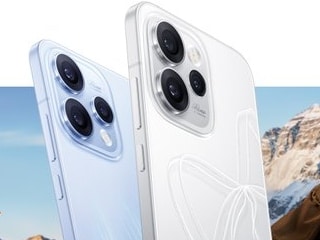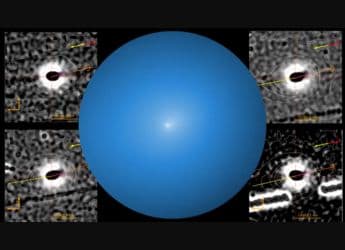- Home
- Science
- Science News
- Expedition 67 Crew Conducts Experiments Aboard ISS That Could Benefit Astronauts, Humans on Earth
Expedition 67 Crew Conducts Experiments Aboard ISS That Could Benefit Astronauts, Humans on Earth
The ISS's Expedition 67 crew is conducting a biology study to explore how skin heals in space.

Photo Credit: Roscosmos/Pyotr Dubrov
NASA is also studying space agriculture with XROOTS (eXposed Root On-Orbit Test System)
The International Space Station's Expedition 67 mission began in March this year and is aimed at conducting research and investigations that will facilitate human spaceflight beyond the low-Earth orbit to Mars and the Moon. Recently, seven crew members have been working on experiments that could benefit both astronauts in space, and human life on Earth. The team is conducting a biology study to explore how skin heals in space. The space agency hopes that the findings could provide insights into healing and could help improve therapies for astronauts as well as people on Earth.
Astronaut Bob Hines (NASA) and ESA astronaut Samantha Cristoforetti on Monday together cleaned up the hardware and supporting samples for the biology study, the US space agency revealed in a blog post. Following this, Hines looked after the XROOTS (eXposed Root On-Orbit Test System) experiment.
The XROOTS space agriculture investigation utilises hydroponic and aeroponic techniques to grow plants in space obviating the need to use soil or other growth media. The observations of the experiment could help identify suitable method to grow crops on a larger scale for future space missions.
Hines worked on Monday afternoon and installed seed cartridges and root modules for the XROOTS experiment. This was done to begin with a 30-day growth period of radishes and mizuna greens.
NASA Flight Engineer Kjell Lindgren opened up the airlock of the Kibo laboratory module and sourced an external science platform. A small satellite deployer was also installed on the research gear by him. The deployer will be placed in the vacuum outside the lab so that it deploys a set of CubeSats into low-Earth orbit for a range of research and education programs.
Another NASA astronaut Jessica Watkins worked on a cable connection inside the Combustion Integrated Rack (CIR) which is used to safely study the behaviour of flames, soot, and fuels in weightlessness.
Get your daily dose of tech news, reviews, and insights, in under 80 characters on Gadgets 360 Turbo. Connect with fellow tech lovers on our Forum. Follow us on X, Facebook, WhatsApp, Threads and Google News for instant updates. Catch all the action on our YouTube channel.
Related Stories
- Samsung Galaxy Unpacked 2025
- ChatGPT
- Redmi Note 14 Pro+
- iPhone 16
- Apple Vision Pro
- Oneplus 12
- OnePlus Nord CE 3 Lite 5G
- iPhone 13
- Xiaomi 14 Pro
- Oppo Find N3
- Tecno Spark Go (2023)
- Realme V30
- Best Phones Under 25000
- Samsung Galaxy S24 Series
- Cryptocurrency
- iQoo 12
- Samsung Galaxy S24 Ultra
- Giottus
- Samsung Galaxy Z Flip 5
- Apple 'Scary Fast'
- Housefull 5
- GoPro Hero 12 Black Review
- Invincible Season 2
- JioGlass
- HD Ready TV
- Laptop Under 50000
- Smartwatch Under 10000
- Latest Mobile Phones
- Compare Phones
- Honor Win RT
- Honor Win
- Xiaomi 17 Ultra Leica Edition
- Xiaomi 17 Ultra
- Huawei Nova 15
- Huawei Nova 15 Pro
- Huawei Nova 15 Ultra
- OnePlus 15R
- Asus ProArt P16
- MacBook Pro 14-inch (M5, 2025)
- OPPO Pad Air 5
- Huawei MatePad 11.5 (2026)
- Xiaomi Watch 5
- Huawei Watch 10th Anniversary Edition
- Acerpure Nitro Z Series 100-inch QLED TV
- Samsung 43 Inch LED Ultra HD (4K) Smart TV (UA43UE81AFULXL)
- Asus ROG Ally
- Nintendo Switch Lite
- Haier 1.6 Ton 5 Star Inverter Split AC (HSU19G-MZAID5BN-INV)
- Haier 1.6 Ton 5 Star Inverter Split AC (HSU19G-MZAIM5BN-INV)

















